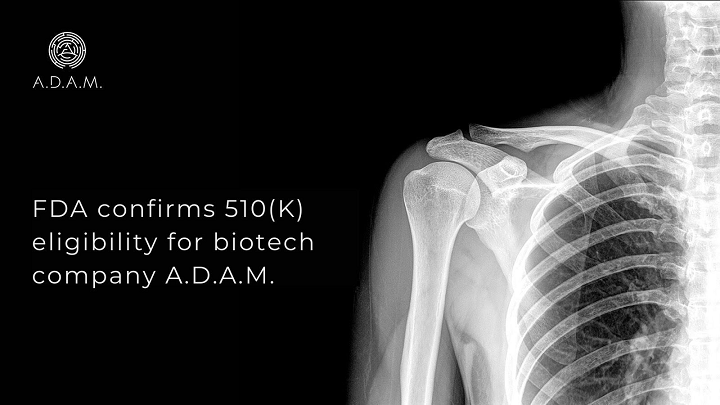As the healthcare industry increasingly welcomes and adopts the use of 3D printing, and other technology solutions such as AI and big data, it’s helping to improve some long-standing issues, including the demand for materials like organs and human tissue. Because of weak links in the supply chain (and the COVID-19 pandemic is shining an unflattering light on many supply chain vulnerabilities right now), for biomaterials like these, that need is often going unmet. But with help from 3D printing, researchers are now able to fabricate these materials in a laboratory setting, and Jordan Miller, assistant professor of bioengineering at Rice University and an expert on fibers and polymers, believes that we could even begin clinical trials for 3D printed replacement organs within the next five to ten years.
However, a Connecticut-based 3D bioprinting company called A.D.A.M. (Advanced Development of Additive Manufacturing) thinks that, at least in the case of 3D printed bones, we’ll see the real deal in far less time…less than two years, in fact.
“150,000 people died waiting for their organ transplants in the last 20 years,” the company states on its website. “We can`t solve this problem using the existing approach to transplanting organs from one person to another. The only way to fix this is to start creating human organs and bones on demand.”
Using 3D printing to fabricate bones and organs on demand can save on time and money as well. A.D.A.M., which also operates out of the Ukraine, designed and built an on-demand tissue manufacturing solution to make 3D printed bone implants out of bioceramics that stimulate osteogenesis and modified biopolymer materials with high strength and good bioresorbability, and has just received confirmation from the US Food and Drug Administration (FDA) that its implants are eligible for 510(k) clearance…they are not FDA-approved yet, but are well on their way. The FDA has endorsed 3D printed healthcare solutions in the past, and in the medical field, this is a step of vital importance if you want to take your innovations to the next level.
“The FDA’s response means a significant reduction in the time to market the product, from 5 years to 1.5 years, since only the animal trials are required,” A.D.A.M.’s CEO Denys Gurak said in a press release. “We are elated to be able to deliver a new breakthrough treatment standard for patients much sooner than previously expected.”
A.D.A.M., which counts Stanley Black & Decker and global investment platform Techstars as partners, initiated its 3D bone bioprinting project in August of 2018, completing a round of seed funding later that year and setting up its laboratory in 2019. In October of that year, the company completed its pre-clinical trials, and has completed another important step with this newly bestowed eligibility from the FDA. Animal trials are set to begin this month, and A.D.A.M. has also decided to move its R&D office to the University of Connecticut as part of its Technology Incubation Program (TIP). This will give the company access to the university’s business support services and advanced research facilities, and as TIP works to help new technology companies grow, it seems like this is a pretty good move.
The company explains on its website that biomaterials are starting to become stronger than typical materials in the human body, which means they can act as useful substitutes. Its modified biopolymers (based on polycaprolactone with the addition of hydroxyapatite) and bioceramics (hydroxyapatite and borosilicate glass) have been tested at Sweden’s Lund University and showed good biocompatibility and feasibility, as well as “stronger structural ability in comparison to some of the body’s structural material.” A.D.A.M. is working to “free people from their bodies” in a more affordable way by developing an infrastructure to repair bones, and has essentially set itself up as a service model, which is accessible through a cloud-based digital platform for bioprinting on demand.
“THE ADAM PROJECT is aimed at supporting the progressive development of tissue engineering. Integrated approach will allow to standardize the transplantology process and make advanced technologies available for consumers,” the company states on the platform site.
With the project’s business model, users will 3D scan bones using ADAM digital, and use these scans, along with the MRI and CAT scans that have been uploaded to the platform, to model a patient’s tissue. Then, binder jetting and extrusion bioprinting will be used to manufacture the implants on-demand from the cloud in the network’s certified clinics.
Future goals for A.D.A.M. are to begin onboarding partner clinics in February 2021, and then complete a round of Series B funding soon after. The company anticipates that its market launch, and its FDA approval, will both occur in the spring of 2022. While it’s primarily focused on bones right now, its strategy for the long run envelops what it calls a “transhumanistic vision,” and that A.D.A.M.’s proprietary technology will be used in the future to print other tissues.
“Our plan is to go beyond bones and allow people to have their tissues and organs printed for an affordable cost, when and where they need them,” Gurak explained.
“This will allow millions to live their lives to the fullest. Concurrently, our R&D team is looking at potential uses for polymers in printing other tissues, such as heart valves and blood vessels. The horizon is bright.”
(Images: A.D.A.M.)
Subscribe to Our Email Newsletter
Stay up-to-date on all the latest news from the 3D printing industry and receive information and offers from third party vendors.
You May Also Like
3D Printing Unpeeled: Biofuel Waste to Filament & Sustainable Photopolymers
I can’t ever remember a day with so many potentially high impact news stories have come out. In one story, we all know that there are problems with the safety...
Finnair Hires AM Craft to 3D Print Plastic Parts for Aircraft Interiors
Riga-based AM Craft, a supplier specialized in 3D printing aviation components and certified under EASA Part 21G, announced a significant achievement today. The company will assist in upgrading Finnair’s A320...
3DPOD Episode 198: High Speed Sintering with Neil Hopkinson, VP of AM at Stratasys
Neil Hopkinson, a pioneering 3D printing researcher, played a pivotal role in developing a body of research that is widely utilized today. He also invented High Speed Sintering (HSS), also...
3D Printing Webinar and Event Roundup: May 12, 2024
Webinars and events are picking up in the AM industry this week! ASTM International continues its Professional Certificate Course and Stratasys continues its advanced in-person trainings, while 3D Systems is...




































